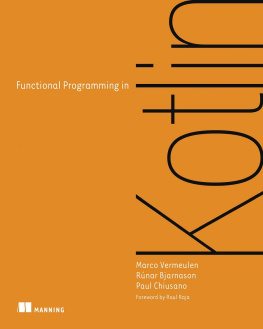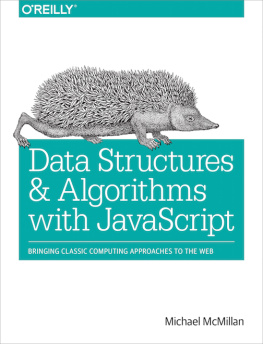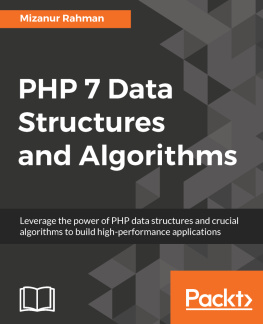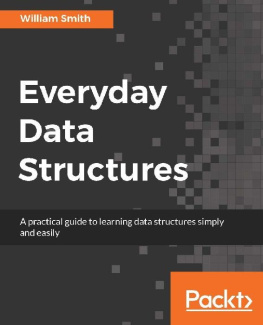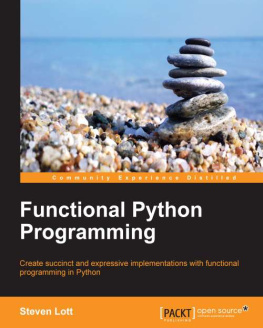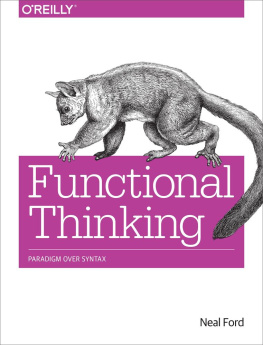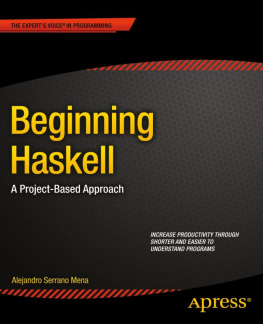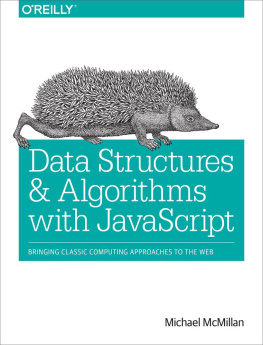PURELY FUNCTIONAL DATA STRUCTURES
Most books on data structures assume an imperative language like C or C++. However, data structures for these languages do not always translate well to functional languages such as Standard ML, Haskell, or Scheme. This book describes data structures from the point of view of functional languages, with examples, and presents design techniques so that programmers can develop their own functional data structures. It includes both classical data structures, such as red-black trees and binomial queues, and a host of new data structures developed exclusively for functional languages. All source code is given in Standard ML and Haskell, and most of the programs can easily be adapted to other functional languages.
This handy reference for professional programmers working with functional languages can also be used as a tutorial or for self-study.
PURELY FUNCTIONAL DATA STRUCTURES
CHRIS OKASAKI
COLUMBIA UNIVERSITY

PUBLISHED BY THE PRESS SYNDICATE OF THE UNIVERSITY OF CAMBRIDGE
The Pitt Building, Trumpington Street, Cambridge, United Kingdom
CAMBRIDGE UNIVERSITY PRESS
The Edinburgh Building, Cambridge CB2 2RU, UK www.cup.cam.ac.uk
40 West 20th Street, New York, NY 10011-4211, USA www.cup.org
10 Stamford Road, Oakleigh, Melbourne 3166, Australia
Ruiz de Alarcn 13, 28014 Madrid, Spain
www.cambridge.org
Information on this title: www.cambridge.org/9780521631242
Cambridge University Press 1998
This book is in copyright. Subject to statutory exception and to the provisions of relevant collective licensing agreements, no reproduction of any part may take place without the written permission of Cambridge University Press.
First published 1998
First paperback edition 1999
Typeface Times 10/13 pt.
A catalog record for this book is available from the British Library
Library of Congress Cataloging in Publication data is available
ISBN 0 521 63124 6 hardback
ISBN 0 521 66350 4 paperback
Transferred to digital printing 2003
Contents
Preface
I first began programming in Standard ML in 1989. I had always enjoyed implementing efficient data structures, so I immediately set about translating some of my favorites into Standard ML. For some data structures, this was quite easy, and to my great delight, the resulting code was often both much clearer and much more concise than previous versions I had written in C or Pascal or Ada. However, the experience was not always so pleasant. Time after time, I found myself wanting to use destructive updates, which are discouraged in Standard ML and forbidden in many other functional languages. I sought advice in the existing literature, but found only a handful of papers. Gradually, I realized that this was unexplored territory, and began to search for new ways of doing things.
Eight years later, I am still searching. There are still many examples of data structures that I just do not know how to implement efficiently in a functional language. But along the way, I have learned many lessons about what does work in functional languages. This book is an attempt to codify these lessons. I hope that it will serve as both a reference for functional programmers and as a text for those wanting to learn more about data structures in a functional setting.
Standard ML Although the data structures in this book can be implemented in practically any functional language, I will use Standard ML for all my examples. The main advantages of Standard ML, at least for presentational purposes, are (1) that it is a strict language, which greatly simplifies reasoning about how much time a given algorithm will take, and (2) that it has an excellent module system that is ideally suited for describing these kinds of abstract data types. However, users of other languages, such as Haskell or Lisp, should find it quite easy to adapt these examples to their particular environments. (I provide Haskell translations of most of the examples in an appendix.) Even C or Java programmers should find it relatively straightforward to implement these data structures, although Cs lack of automatic garbage collection can sometimes prove painful.
For those readers who are not familiar with Standard ML, I recommend Paulsons ML for the Working Programmer [Pau96] or Ullmans Elements of ML Programming [U1194] as introductions to the language.
Other Prerequisites This book is not intended as a first introduction to data structures in general. I assume that the reader is reasonably familiar with basic abstract data types such as stacks, queues, heaps (priority queues), and finite maps (dictionaries). I also assume familiarity with the basics of algorithm analysis, especially big-Oh notation (e.g., O(n log n)). These topics are frequently taught in the second course for computer science majors.
Acknowledgments My understanding of functional data structures has been greatly enriched by discussions with many people over the years. I would particularly like to thank Peter Lee, Henry Baker, Gerth Brodal, Bob Harper, Haim Kaplan, Graeme Moss, Simon Peyton Jones, and Bob Tarjan.
1
Introduction
When a C programmer needs an efficient data structure for a particular problem, he or she can often simply look one up in any of a number of good textbooks or handbooks. Unfortunately, programmers in functional languages such as Standard ML or Haskell do not have this luxury. Although most of these books purport to be language-independent, they are unfortunately language-independent only in the sense of Henry Ford: Programmers can use any language they want, as long as its imperative. To rectify this imbalance, this book describes data structures from a functional point of view. We use Standard ML for all our examples, but the programs are easily translated into other functional languages such as Haskell or Lisp. We include Haskell versions of our programs in Appendix A.
1.1 Functional vs. Imperative Data Structures
The methodological benefits of functional languages are well known [], but still the vast majority of programs are written in imperative languages such as C. This apparent contradiction is easily explained by the fact that functional languages have historically been slower than their more traditional cousins, but this gap is narrowing. Impressive advances have been made across a wide front, from basic compiler technology to sophisticated analyses and optimizations. However, there is one aspect of functional programming that no amount of cleverness on the part of the compiler writer is likely to mitigate the use of inferior or inappropriate data structures. Unfortunately, the existing literature has relatively little advice to offer on this subject.
Why should functional data structures be any more difficult to design and implement than imperative ones? There are two basic problems. First, from the point of view of designing and implementing efficient data structures, functional programmings stricture against destructive updates (i.e., assignments) is a staggering handicap, tantamount to confiscating a master chefs knives. Like knives, destructive updates can be dangerous when misused, but tremendously effective when used properly. Imperative data structures often rely on assignments in crucial ways, and so different solutions must be found for functional programs.
The second difficulty is that functional data structures are expected to be more flexible than their imperative counterparts. In particular, when we update an imperative data structure we typically accept that the old version of the data structure will no longer be available, but, when we update a functional data structure, we expect that both the old and new versions of the data structure will be available for further processing. A data structure that supports multiple versions is called
Next page

